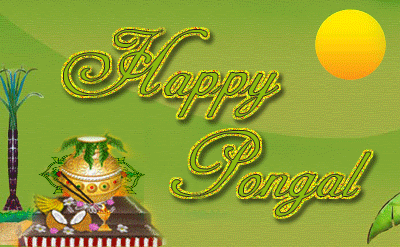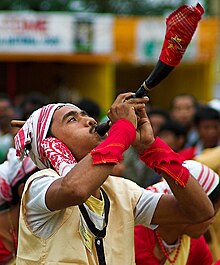







![]()
![]()










![]()
![]()


🏏T20 Asia Cup 2025: Match 19 - Final: India vs Pakistan @Dubai🏏
Bigg Boss 19 - Daily Discussion Topic - 28th Sep 2025 - WKV
BOOTH ROAMING 28.9
Yeh Rishta Kya Kehlata Hai Sept 28, 2025 EDT
CID episode 81 - 27th September
70th Filmfare Awards Nominations
Ranbir Kapoor Birthday Celebration Thread 🎂🎂
🎶🎵Tribute to Lata Mangeshkar on Her 96th Birth Anniversary🎵🎶
Diana praises Deepika Padukone’s work ethic
Revisiting 90's nostalgia
Geetanjali to die?
SAMAR ki hogi re entry !!
Mihir ka Noina pe ato..oot vishwas
Yeh Rishta Kya Kehlata Hai - 29 Sep 2025 EDT
Ahaan’s next with Sanjay Bhansali? 🔥
PAAV PHISLAA 29.9
Maan and Geet- Love Wins Against All Odds..
And Janhvi gives another flop!!
Pari the gamechanger or Noina k hukum ka ekka.



 Tamil Nadu
Tamil Nadu 
 Bogi Pongal
Bogi Pongal
 Surya Pongal
Surya Pongal


 Mattu Pongal
Mattu Pongal

 Kaanum Pongal
Kaanum Pongal


 Andra Pradesh
Andra Pradesh 
 Bogi Pongal
Bogi Pongal 

 Makara Sankranti
Makara Sankranti 

 Kanuma
Kanuma 
 Mukkanuma
Mukkanuma 


 Karnataka
Karnataka 





 Bengal
Bengal 


 Gujarat
Gujarat 


 Maharashtra
Maharashtra 
In Maharashtra, Makar Sankranti happens to be the time when the sugarcane harvest is ready to be made into jaggery. Two sweets popular on this day are the multi colored halwa [sugar granules coated in sugar syrup] and til-gul ladoos [sweetmeats made from sesame seeds and jaggery]. The til-gul ladoos are often exchanged to forget past ill feelings and hostilities. While exchanging the ladoos, the saying


 Punjab
Punjab 


 Rajasthan
Rajasthan


 Uttar Pradesh
Uttar Pradesh 




 Credits
Credits 

ASSAM


Bihu denotes a set of three different cultural festivals of Assam and celebrated by the Assamese diaspora around the world. Though they owe their origins to ancient rites and practices they have taken definite urban features and have become popular festivals in urban and commercialized milieus in the recent decades. One includes the Assamese new year celebrated in April. Bihu is also used to imply Bihu dance and Bihu folk songs. The Bihus are the national festivals of Assam. The most important festivals of Assam are the Bihus, celebrated with fun and abundance by all Assamese people irrespective of caste, creed, religion, faith and belief.
| |
The word Bihu is derived from the language of the Dimasa people who have been agrarian since time immemorial. Their supreme god is Brai Shibrai or Father Shibrai. The First crops of the season are offered to Brai Shibrai while wishing for peace and prosperity. So Bi means "to ask" and Shu means "peace and prosperity" in the world. Hence the word BISHU gradually became Bihu to accommodate linguistic preferences.The other suggestion is that "Bi" means "to ask" and "Hu" means "to give" and so came BIHU. It was said by "Kalaguru" Bishnu Prasad Rabha. In Assam, Rongali Bihu draws from many different traditions' Austro-Asiatic, Sino-Burmese and Indo-Aryan'and is celebrated with great fervor. Celebrations begin in the middle of April and generally continue for a month. This is the traditional new year. In addition there are two other Bihus: Kongali Bihu in October (associated with the September equinox) and Bhogali Bihu in January (associated with the January solstice). Like most other Indian festivals, Bihu (all three) is associated with farming; as the traditional Assamese society is predominantly agricultural. In fact, similar festivals are also celebrated around the same time elsewhere in India.
In a year there are three Bihu festivals in Assam - in the months of Bohaag (Baisakh, the middle of April), Maagh (the middle of January), and Kaati (Kartik, the middle of October). The Bihus have been celebrated in Assam since ancient times. Each Bihu coincides with a distinctive phase in the farming calendar. The most important and colourful of the three Bihu festival is the Spring festival "Bohag Bihu" or Rongali Bihu celebrated in the middle of April. This is also the beginning of the agricultural season.Bihu is celebrated by the all parts of Assam and all cast and religion.Directly we can say that Bihu is secular festival which brings the humanity,peace and brotherhood among the various cast and religion
Rongali Bihu (mid-April, also called Bohag Bihu), the most popular Bihu celebrates the onset of the Assamese New Year (around April 15) and the coming of Spring. This marks the first day of the Hindu solar calendar and is also observed in Mithila,Bengal, Manipur, Nepal, Orissa, Punjab, Kerala and Tamil Nadu though called by different names. It's a time of merriment and feasting and continues, in general, for seven days. The farmers prepare the fields for cultivation of paddy and there is a feeling of joy around. The women make pitha, larus (traditional food made of rice and coconut) and Jolpan which gives the real essence of the season. The first day of the bihu is called goru bihu or cow bihu, where the cows are washed and worshipped, which falls on the last day of the previous year, usually on April 14. This is followed by manuh (human) bihu on April 15, the New Year Day. This is the day of getting cleaned up, wearing new cloths and celebrating and getting ready for the new year with fresh vigor. The third day is Gosai (Gods) bihu; statues of Gods, worshiped in all households are cleaned and worshiped asking for a smooth new year.

The folk songs associated with the Bohag Bihu are called Bihugeets or Bihu songs. The form of celebration and rites vary among different demographic groups.
Rongali Bihu is also a fertility festival, where the bihu dance with its sensuous movements using the hips, arms, etc., by the young women call out to celebrate their fertility. In this aspect, the bihu dance can also be called a mating ritual by the young men and women. Bohag Bihu or Rongali Bihu festival continues for seven days.They are known as..Goru Bihu (Cow Bihu),Manuh Bihu, Hat Bihu, Senehi Bihu, Maiki Bihu, Rongali Bihu and Sera Bihu.Actually first day for to pay respect to cows and other days for social activities.(2012 by nabajit deka)

Manuh Bihu

Mia Bihu
Bihutoli Bihu
Kongali Bihu (mid-October, also called Kati-Bihu) has a different flavor as there is less merriment and the atmosphere has a sense of constrain and solemnity. During this time of the year, the paddy in the fields are in the growing stage and the granaries of the farmers are almost empty. On this day, earthen lamps (saki) are lit at the foot of the household tulsi plant, the granary, the garden (bari) and the paddy fields. To protect the maturing paddy, cultivators whirl a piece of bamboo and recite rowa-khowa chants and spells to ward off pests and the evil eye. During the evening, cattle are fed specially made rice items called pitha. The Bodo people light lamps at the foot of the siju (Euphorbia neriifolia) tree. This Bihu is also associated with the lighting of akaxi gonga or akaxbonti, lamps at the tip of a tall bamboo pole, to show the souls of the dead the way to heaven, a practice that is common to many communities in India, as well as Asia and Europe
Bhogali Bihu (mid-January, also called Magh Bihu) comes from the word Bhog that is eating and enjoyment.[9] It is a harvest festival and marks the end of harvesting season. Since the granaries are full, there is a lot of feasting and eating during this period. On the eve of the day called uruka, i.e., the last day of pausa, menfolk, more particularly young men go to the field, preferably near a river, build a makeshift cottage called Bhelaghar with the hay of the harvest fields and the Meji, the most important thing for the night. During the night, they prepare food and there is community feasting everywhere.There is also exchange of sweets and greetings at this time. The entire night (called Uruka) is spent around a Meji with people singing bihu songs, beating Dhol, a typical kind of drums or playing games. Boys roam about in the dark stealing firewood and vegetables for fun. The next morning they take a bath and burn the main Meji. People gather around the Meji and throw Pithas (rice cakes) and betel nuts to it while burning it at the same time. They offer their prayers to the God of Fire and mark the end of the harvesting year. Thereafter they come back home carrying pieces of half burnt firewood for being thrown among fruit trees for favourable results. All the trees in the compound are tied to bamboo strips or paddy stems. Different types of sports like Buffalo-fight, Egg-fight, Cock-fight, Nightingale-fight etc. are held throughout the day. There are other conventional festivals observed by various ethnic-cultural groups. Me-dam-me-phi, Ali-aye-ligang, Porag, Garja, Hapsa Hatarnai, Kherai are few among them.The koch celebrates this bihu as pushna. All assamese people around the world celebrates this tradition on the month of January as per English calendar. The Uruka comes on 13 January & Bihu is on 14'15.
Bihu is also seen to be celebrated abroad. Many Bihu associations / committees exist elsewhere where this festival is celebrated with enthusiasm. The London Bihu Committee (LBC), UK is one of them amongst others.
In Orissa people prepare 'makar chaula(uncooked newly harvested rice, banana, coconut, jaggery, sesame, Rasagola, Khai/Liaa and chhena puddings for naivedya to gods and goddesses.The withdrawing winter entails change in food habits & intake of nourishing and rich food. Therefore this festival also holds immense scientific significance.Devotees also worshiped the sun god at great Konark temple with great favour and enthusiasm as the sun started its annual swing northwards, according to various Indian calendars. According to the Sun's movement, the days from this day on-wards become lengthy and warmer and so the Sun-God is worshiped as a great benefactor. Makar Mela(Fun fair) is observed at Dhabaleswar in Cuttack, Hatakeshwar at Atri in Khordha, Makar Muni temple in Balasore and near various deities in each district of Odisha. In the temple of Lord Jagannath this festival is observed as Nabanki and 'Uttarayana Yatra'. In Mayurbhanj, Keonjhar,kalahandi, koraput and Sundargarh where the tribal population is more, the festival is celebrated with great joy. They have been celebrating this festival with great enthusiasm. They sing, dance and enjoy.Many tribal in our country start their New Year from the day of Sankranti by lighting bonfires, dancing and eating their particular dishes sitting together.
Happy Ponggal
Happy Lohri and
Makar Sankranti...
May God bless all of us and Have fun...
